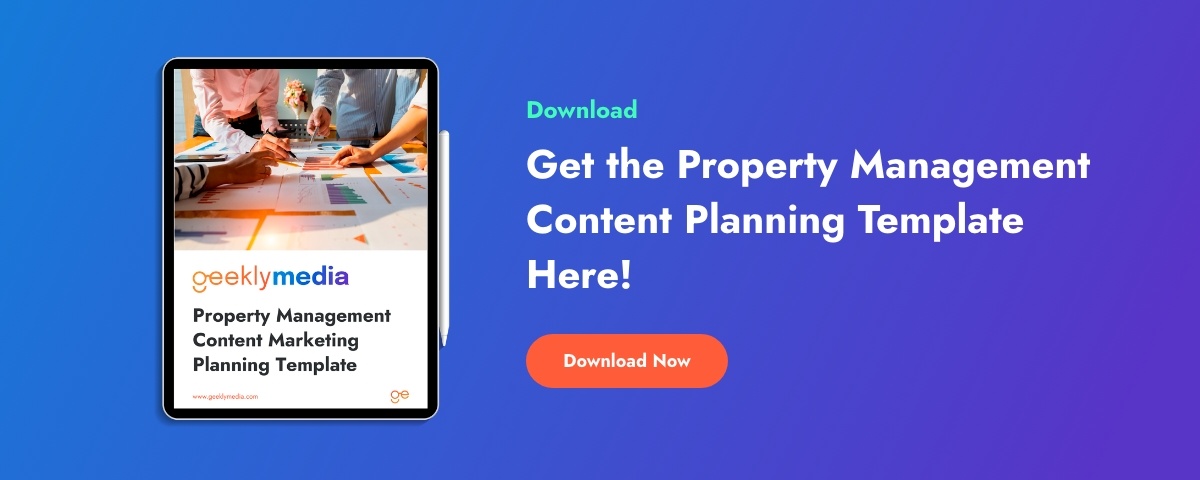
Content Marketing Strategy: Build a Long-Term Plan That Works
Listen to the article
Content Marketing Strategy: Build a Long-Term Plan That Works
Content marketing isn’t just about churning out blog posts and hoping for the best. It’s about crafting a strategy that aligns with your business goals, speaks to your audience, and builds lasting relationships. The most successful brands don’t rely on random posts or occasional promotions—they create long-term content marketing strategies that keep their audience engaged and continuously drive results.
With the right strategy, your content becomes a powerful tool for brand awareness, lead generation, and customer retention. It helps position your business as an industry leader while fostering trust and credibility with your audience.
So, how do you create a long-term strategy that delivers results? Let’s break it down.
What Is a Content Marketing Strategy?
A content marketing strategy is a structured plan that outlines how your business will create, distribute, and manage content to achieve specific goals. Instead of randomly posting blogs or social media updates, it provides a clear direction for consistently delivering valuable, relevant, and engaging content to your target audience.
A strong content strategy makes sure every piece of content has a clear role—whether it’s bringing in new visitors, turning leads into customers, or keeping your audience engaged. Instead of scrambling for quick wins, a well-planned approach helps you build credibility, grow your brand, and create lasting connections with your audience over time.
Campaigns vs. Long-Term Strategies
A campaign is a short-term, focused effort designed to achieve a specific goal, like launching a new product or running a seasonal promotion. It’s a way to create buzz and drive quick results.
A long-term content strategy, on the other hand, is about consistency. It’s a continuous plan to build your brand, grow your audience, and establish trust over time. While campaigns can be great for short bursts of engagement, their impact disappears if they aren’t part of a bigger strategy. A strong content marketing plan ensures that every campaign contributes to long-term success, keeping your audience engaged beyond just one promotion.
7 Key Steps to an Effective Content Marketing Strategy
Building a content marketing strategy doesn’t happen overnight. It requires careful planning, execution, and ongoing adjustments to make sure your content reaches the right people and drives meaningful results.
Below, we’ll walk through the key steps to creating a content marketing strategy that actually works.
1. Define Your Audience & Goals
Before you create content, you need to know who you’re creating it for and what you want to achieve. Developing buyer personas is a crucial step in understanding your audience. A buyer persona is a semi-fictional representation of your ideal customer based on data and research. It includes demographic details, pain points, behaviors, and motivations.
For example, if you’re targeting real estate investors, your persona might be "Sarah, a 35-year-old investor looking for reliable property management solutions."
Once you have defined your audience, the next step is setting SMART goals:
- Specific
- Measurable
- Achievable
- Relevant
- Time-bound
These goals help keep your content efforts focused and allow you to measure success effectively. For example, instead of simply aiming to "get more website traffic," a SMART goal would be: "Increase organic website traffic by 30% within six months through SEO-optimized blog content."
By setting clear goals, you can track your progress and adjust your content strategy as needed.
2. Perform a Content Audit
It's important to assess your existing content before diving into new content creation. A content audit helps you identify what’s working, what’s outdated, and where the gaps are.
Start by reviewing past performance. Look at your blog posts, website pages, and social media content. Which pieces have driven the most traffic and engagement? Which have fallen flat? Use tools like Google Analytics, SEMrush, and Ahrefs to gather data on content performance. This will help you refine your content strategy by focusing on what resonates with your audience.
Another key step is identifying gaps. Are there high-value topics your competitors are covering that you haven't? Are some of your older blog posts in need of an update? Addressing these areas will improve your content’s effectiveness and relevance.
3. Choose the Right Content Formats
There are multiple ways to present your content, and each serves a different purpose. The key is to select formats that best align with your audience’s preferences and your business goals. Here’s a breakdown of the most effective content formats and how they can be used:
- Blog Posts: These are the foundation of most content strategies. Blog posts help improve SEO, provide valuable insights, and position your brand as an industry leader. They are great for driving organic traffic and keeping your website fresh with new content.
- Videos: Video content is highly engaging and performs well on social media. It can be used for product demos, customer testimonials, or educational content. Short-form videos work best for platforms like Instagram and TikTok, while long-form videos are great for YouTube and webinars.
- eBooks & Whitepapers: These are longer, more detailed pieces of content that serve as lead magnets. They provide in-depth information on a topic and can be used to capture emails through gated content. Whitepapers are particularly useful in B2B marketing to showcase industry expertise.
- Case Studies: These demonstrate real-life success stories of your clients using your products or services. Case studies build trust and credibility by showing tangible results, making them powerful tools for sales teams.
-
Social Media Content: Platforms like Facebook, Instagram, LinkedIn, and Twitter are essential for sharing bite-sized content, engaging with your audience, and building brand awareness. Social media posts can range from quick tips and behind-the-scenes insights to promotional graphics and interactive polls.
-
Emails: Email marketing remains one of the most effective ways to nurture leads and maintain customer relationships. Whether it’s newsletters, promotional offers, or personalized follow-ups, emails keep your audience informed and engaged.
- Podcasts: Audio content is on the rise, and podcasts allow businesses to share industry insights, interview experts, and connect with their audience in a more personal way. Podcasts help build authority and keep audiences engaged over time.
- Webinars & Live Streams: These formats allow businesses to engage with their audience in real-time. Webinars are great for educational content, product demonstrations, and Q&A sessions, while live streams are ideal for social media engagement.
Each type of content plays a specific role in how your audience engages with your brand. Choosing the right mix allows you to reach people in the way they prefer to consume content, whether that’s reading a blog, watching a video, or listening to a podcast.
4. Develop a Content Calendar & Distribution Plan
Staying consistent with your content is what keeps your audience engaged and your brand top of mind. A content calendar helps you plan ahead, stay organized, and make sure your content supports your business goals. It gives you a clear roadmap of what to post, when to post it, and where to share it.
Your calendar should include topics, keywords, deadlines, and the platforms where your content will be published.
Using tools like Trello, Asana, HubSpot, or Google Sheets, you can map out your content schedule in advance. Best practices for posting include maintaining a steady cadence to keep your audience engaged. An example of this is bi-monthly blog posts or weekly social media updates.
A solid omnichannel distribution strategy ensures your content reaches as many people as possible. For example, a blog post can link to a case study, an email can promote an eBook, and a social post can highlight a video. This cross-promotion extends your content’s reach and impact.
5. Leverage Automation & AI for Efficiency
Content marketing takes time, but automation and AI tools can make the process much more efficient.
Platforms like HubSpot take automation to the next level by streamlining content marketing across multiple channels. It’s not just about scheduling emails or blog posts—HubSpot helps businesses manage entire marketing workflows effortlessly.
What sets HubSpot apart is its ability to integrate marketing, sales, and customer service into one platform. Businesses can track engagement, attribute revenue to specific marketing efforts, and ensure that no lead falls through the cracks.
AI-driven tools such as ChatGPT, Jasper, and Grammarly assist with content creation by helping generate ideas, refine messaging, and improve overall quality. They’re great for brainstorming topics, polishing content, and structuring blog posts.
For social media, scheduling tools like Buffer, Hootsuite, and HubSpot allow you to plan and automate posts across multiple platforms. This can help your content stay consistent without requiring daily manual updates.
6. Optimize for SEO & Performance Tracking
Creating content without SEO optimization is like shouting into the void—no one will find it. Keyword research is essential, and tools like SEMrush, Ahrefs, and Google Keyword Planner can help identify high-value keywords for your content.
On-page SEO content techniques (optimizing meta descriptions, using internal links, and structuring content with proper headings) help search engines understand your content better and rank it higher. Other best practices include:
- Using clear and concise URLs
- Adding alt text to images
- Ensuring fast page load speeds.
Beyond on-page optimization, regularly updating old content and building high-quality backlinks can improve your website’s authority. Track performance metrics like traffic, engagement, and conversions. This helps you see what’s working and adjust your strategy accordingly.
7. Iterate & Improve Over Time
A content strategy is never set in stone. Regular analysis and adjustments are crucial to long-term success. Monitor analytics to identify high-performing content and areas that need improvement. A/B testing different content formats, headlines, and CTAs can provide insights into what resonates best with your audience. Updating outdated content with fresh insights ensures continued relevance and SEO rankings.
Common Mistakes to Avoid in Content Marketing Strategy
Even the best strategies can fail if you fall into these common traps:
- Not Aligning Content with Business Goals: Your content should support your overall business objectives, not just exist for the sake of publishing.
- Ignoring Distribution: Great content means nothing if no one sees it—promote it across multiple channels.
- Measuring Vanity Metrics: Page views and likes are nice, but conversions, engagement, and revenue growth matter more.
Avoiding these mistakes can be the difference between a content strategy and one that actively drives results.
How Geekly Media Helps Businesses Build a Winning Content Strategy
At Geekly Media, we live and breathe content marketing. We don’t just create content—we create strategies that drive growth. Here’s how we help businesses like yours:
We start by developing a custom strategy tailored to your business goals and audience. From blog writing and SEO to automation and analytics, we handle it all. We also continuously monitor performance data to refine and optimize your content strategy for maximum impact.
Start by reaching out to speak to a team member or request your free (exclusive) copy of our in-depth resource, the "Property Management Content Marketing Planning Template."






-1.png)
